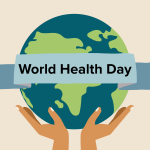How Innovation Fueled the Rise of Telehealth
- 22 April 2020
- Blog
eClinicalWorks

Imagination reshaping healthcare
Much attention has focused on how public health authorities and politicians are coordinating policies, equipment, and supplies to combat the COVID-19 pandemic.
But another important and lesser-known story centers on the innovation and creativity of doctors and researchers on the front lines of the crisis.
Ventilators and vaccines capture headlines, but telehealth is the new daily champion of the medical world, enabling practices to continue to deliver care. Using existing computers, cameras, and bandwidth, clinicians are delivering everything from routine pediatric care and dermatological checks to orthopedic follow-ups and mental health counseling.
Physicians and researchers are also capitalizing on the growth of FOAM — free open access medical information — including social media, podcasts, blogs, message boards, and group emails and texts.
Faced with the most serious global pandemic since the 1918 influenza epidemic, the medical community is connecting with new ideas and solutions that can’t necessarily wait for publication in peer-reviewed journals.
Innovation fueled telehealth’s rise
Telehealth has long been on the innovation frontier. A 1996 Institute of Medicine study notes:
- In 1959, clinicians at the University of Nebraska “used two-way interactive television to transmit neurological examinations and other information across campus.”
- in 1967, the Miami Fire Department used radio channels to transmit electrocardiographic rhythms from rescue units to Jackson Memorial Hospital.
Such procedures “are now so routine and so much a part of mainstream health care that they are often not mentioned as telemedicine applications,” the study concludes.
The COVID-19 pandemic is not the first time telehealth has helped during a crisis. Telehealth helped coordinate care for victims of earthquakes in Armenia in 1988 and Pakistan in 2005. In 2013, Indian researchers reported on how telehealth was used to share data, helping to avert a cholera outbreak.
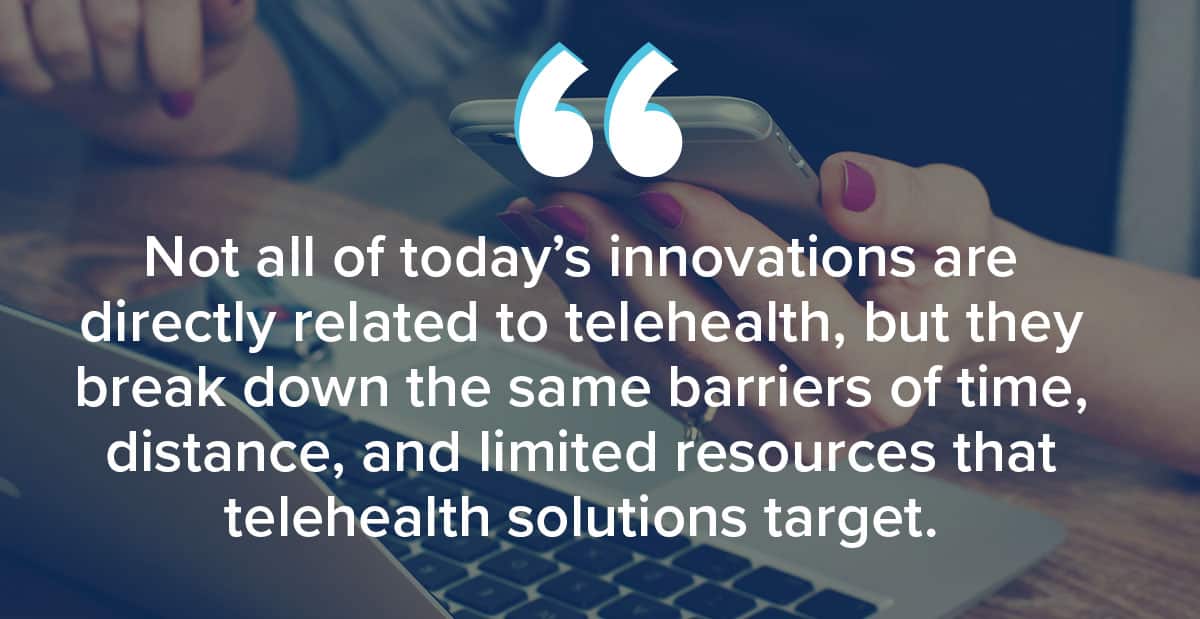
Creativity and collaboration continue
In the face of the COVID-19 pandemic, scientists and doctors are once again combining technology and medicine in creative ways.
- A Vermont pulmonologist suggested on an emergency medicine blog that continuous positive airway pressure (CPAC) techniques to treat sleep apnea might be a good alternative to using ventilators. The idea has been implemented at some NYC hospitals.
- A hospital in Brescia, Italy, got help from a 3D printing company, which designed and produced a valve critical to saving patients’ lives.
- Teams from Harvard and MIT developed the Private Kit: Safe Paths app, which uses phone tracking data to alert users they may have encountered someone with coronavirus.
Not all of today’s innovations are directly related to telehealth, but they break down the same barriers of time, distance, and limited resources that telehealth solutions target.
Each has a role to play in meeting the challenges of this pandemic, and some are likely to endure — perhaps in new and surprising ways — long after COVID-19 has been brought under control.
To learn more about how healow Telehealth Solutions can help practices continue to serve their patients, contact us today.
Related Post

- 9 January 2025
- Blog
Unveiling Trends Set to Transform Healthcare in 2025

- 15 February 2024
- Blog
AI Medical Scribes in Remote Healthcare Services

- 7 November 2023
- Blog
Embracing Technology for Startup Weight Loss and Medical Spa Clinics

- 27 September 2022
- Blog
Back to School — for Your Practice, Too!

- 21 June 2022
- Blog
Dermatology Made Easier This Summer

- 25 March 2022
- Blog
HIMSS22 Outlines Opportunities in Healthcare

- 17 February 2022
- Blog
Defense Matters: Keeping Remote Medicine Safe

- 1 February 2022
- Blog
One Key for 2022: Staying Focused on Patients

- 28 January 2022
- Blog
4 Patient Engagement Solutions to Help Patients and Practices in 2022

- 25 January 2022
- Blog
The Right Tools During Challenging Times

- 19 January 2022
- Blog
Healthcare 2022: Regulatory Trends to Look for in the Year Ahead

- 18 November 2021
- Blog
Remaining Vigilant in the Lung Cancer Fight
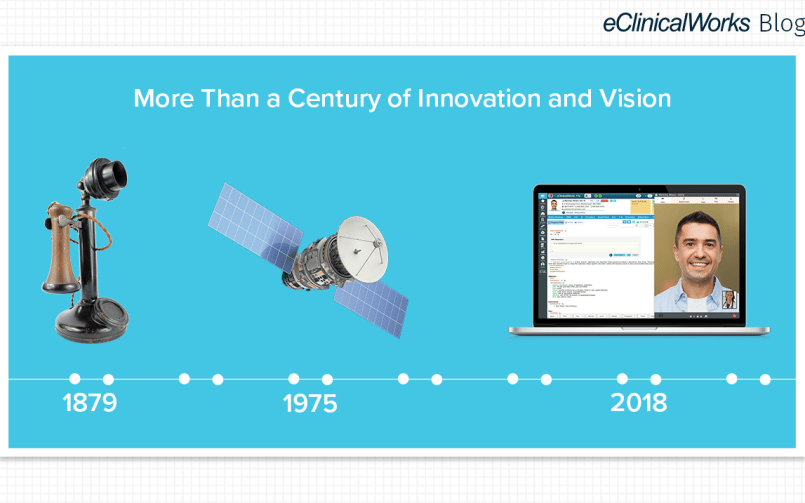
- 4 November 2021
- Blog
Telehealth Is Long-Established Science Fact

- 2 September 2021
- Blog
It’s Time for a Better Check-in Solution
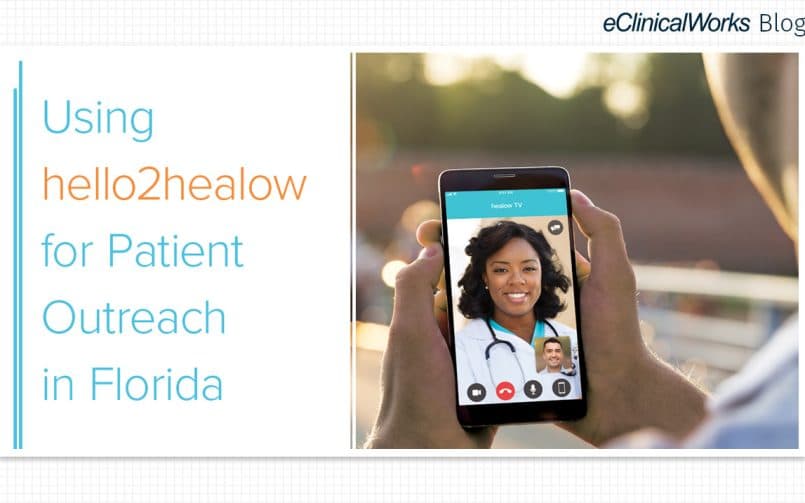
- 12 August 2021
- Blog
Using hello2healow for Patient Outreach in Florida

- 27 May 2021
- Blog
When Neurological Care Cannot Wait

- 20 May 2021
- Blog
Solutions for Allergy Testing, Tracking, and Treatment

- 16 March 2021
- Blog
A Partner for Reinventing Your Practice
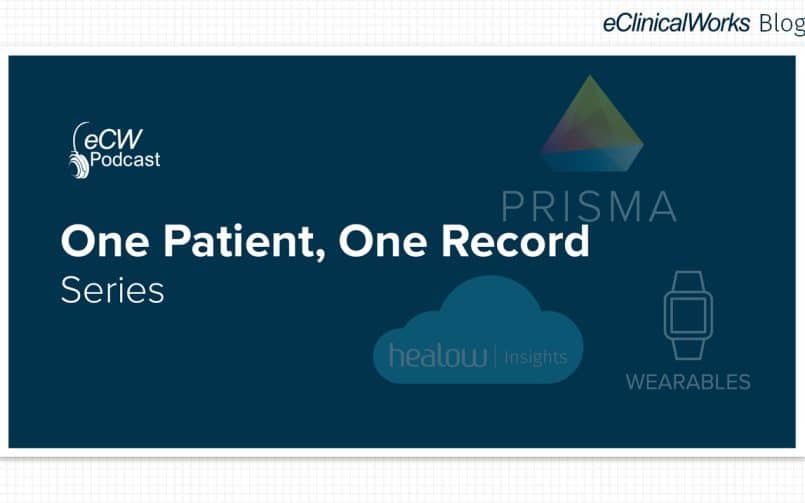
- 2 March 2021
- Blog
What it Takes to Better Know Your Patients

- 29 January 2021
- Blog
Putting the Pieces Together for Quality Healthcare

- 30 December 2020
- Blog
2020 eClinicalWorks Year in Review

- 22 December 2020
- Blog
Thirlby Clinic: Using Telehealth and CCM for Better Disease Management

- 15 December 2020
- Blog
A Challenging Year Is Ending — New Opportunities Ahead

- 10 December 2020
- Blog
How a Practice Found Success With Telehealth & Contactless Check-In

- 24 November 2020
- Blog
The Continuing Influence of Telehealth

- 19 November 2020
- Blog
Meeting the Demand for Behavioral Health Services

- 12 November 2020
- Blog
Reinventing Healthcare for a Brighter Future
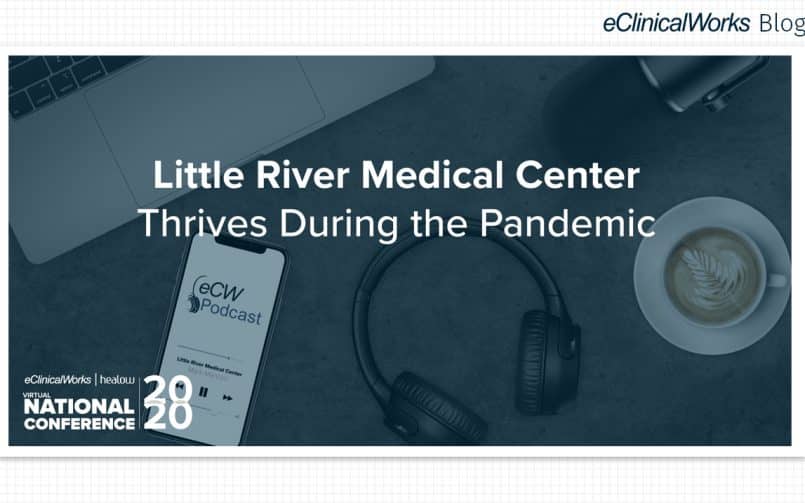
- 6 November 2020
- Blog
How Little River Medical Center Thrived During the Pandemic
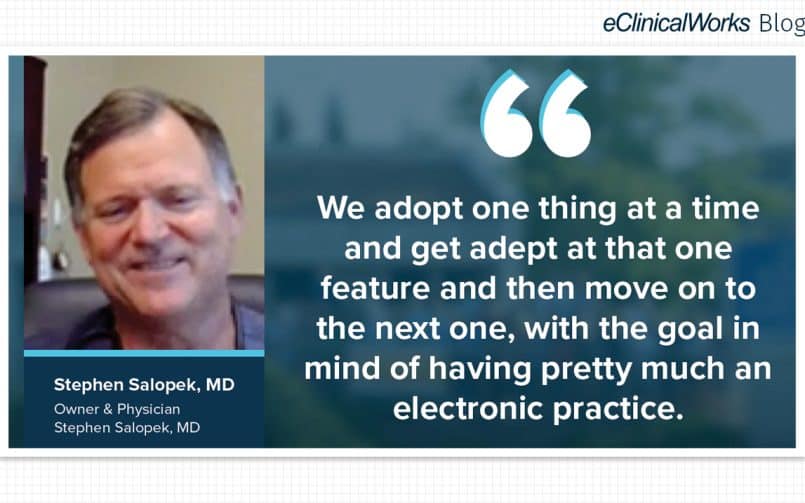
- 19 October 2020
- Blog
How Telehealth, CCM, and Contactless Check-In Revitalized a Practice in Need

- 15 October 2020
- Blog
Targeting Behavioral Health, Remote Care & More
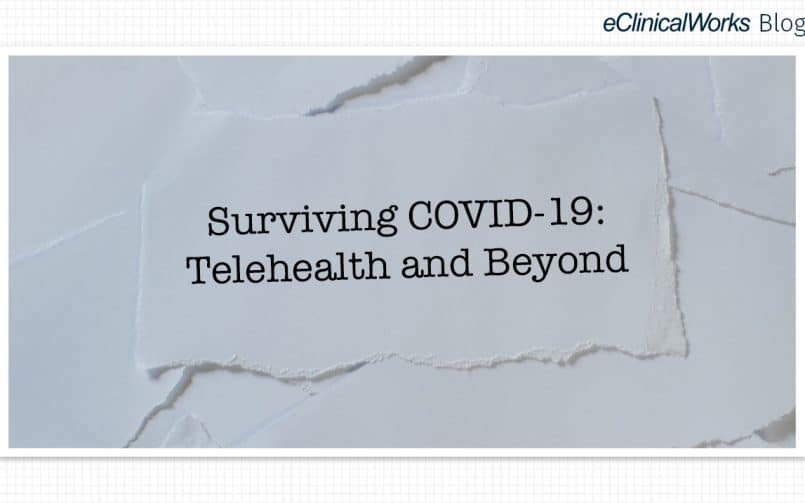
- 30 September 2020
- Blog
Surviving COVID-19: Telehealth and Beyond

- 21 September 2020
- Blog
3 Important healow TeleVisits Features

- 9 September 2020
- Blog
It’s Your Practice — Dream Big!

- 1 September 2020
- Blog
Back to the Basics During the COVID-19 Era
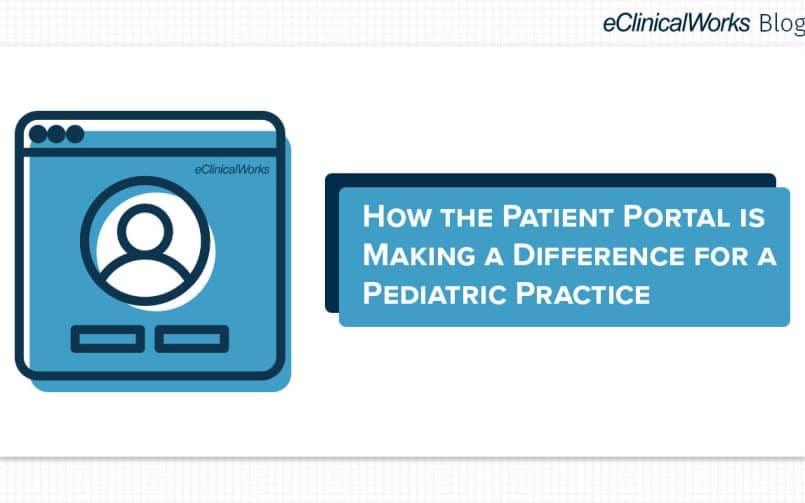
- 28 August 2020
- Blog
How the Patient Portal Is Making a Difference for a Pediatric Practice

- 24 July 2020
- Blog
Pushing Boundaries, Reaching New Horizons

- 17 July 2020
- Blog
How to Keep Your Patients & Staff Safe During COVID-19

- 1 July 2020
- Blog
How to Digitize Your Front Office
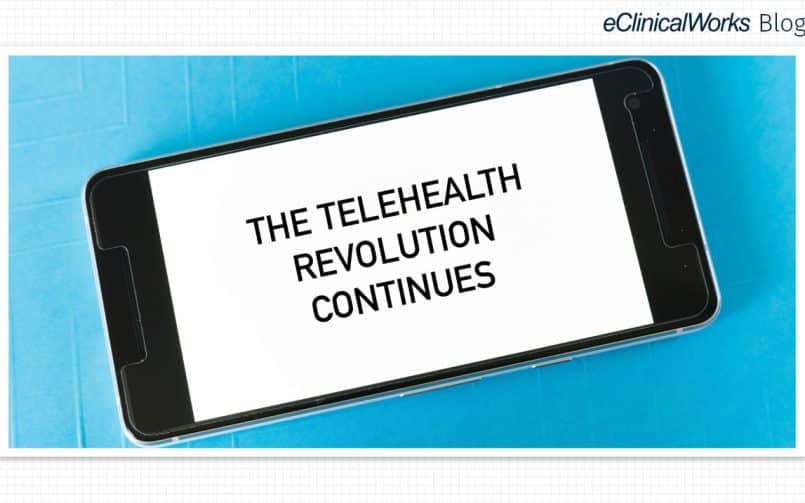
- 29 June 2020
- Blog
The Telehealth Revolution Continues

- 24 June 2020
- Blog
How Advocare Put healow TeleVisits™ to Work
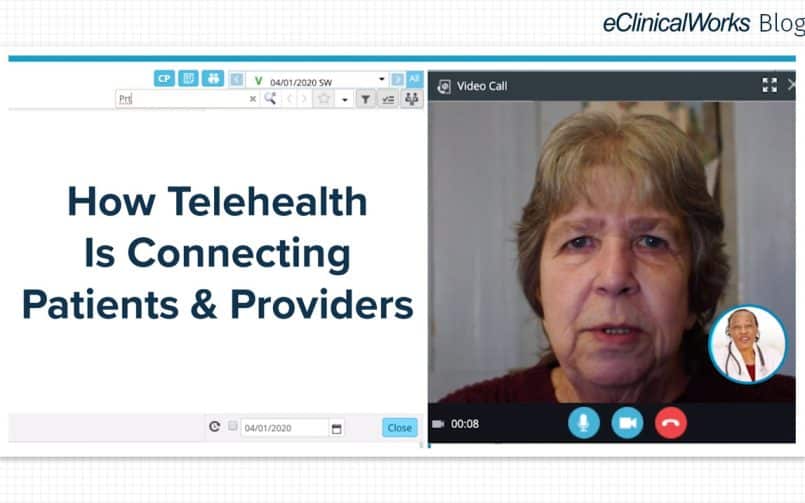
- 17 June 2020
- Blog
How Telehealth Is Connecting Patients & Providers

- 12 June 2020
- Blog
Finding a New Normal: The Patient Experience

- 10 June 2020
- Blog
Minding Mental Health During COVID-19

- 3 June 2020
- Blog
Expanding the Range of Specialty Care

- 1 June 2020
- Blog
Reinventing Your Practice

- 29 May 2020
- Blog
What Telehealth Could Mean for Practices Today

- 27 May 2020
- Blog
Resourceful Action During Extreme Times

- 21 May 2020
- Blog
Like Telehealth? There’s More!
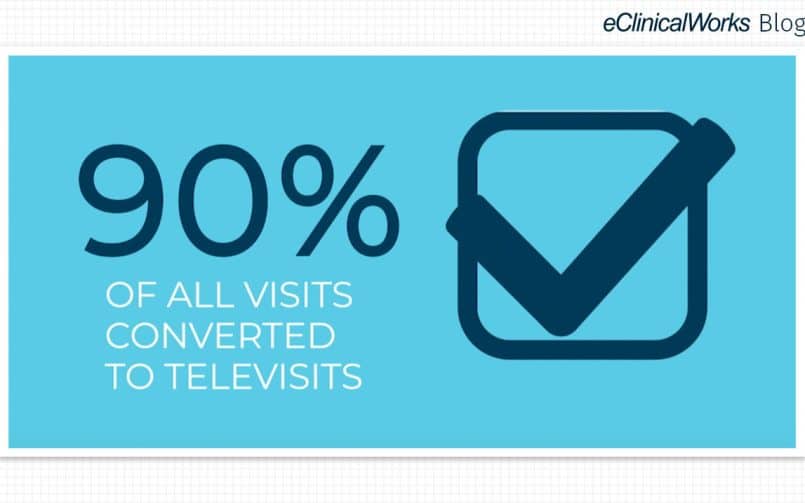
- 19 May 2020
- Blog
The Numbers Behind TeleVisits

- 16 May 2020
- Blog
What Telehealth Can Do for Specialty Practices

- 13 May 2020
- Blog
Routine Care During Nonroutine Times

- 12 May 2020
- Blog
How Telehealth Will Make The 21st Century Ours

- 8 May 2020
- Blog
Seeing Medicine in a New Light

- 7 May 2020
- Blog
Telehealth: Healing Action at a Distance
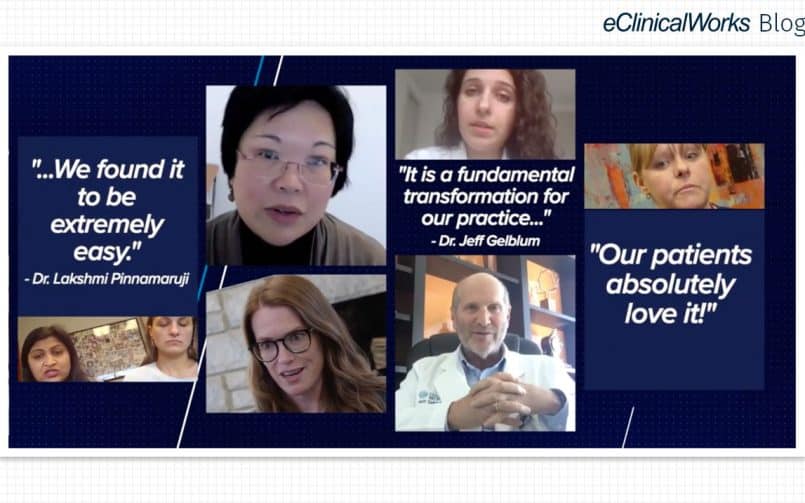
- 5 May 2020
- Blog
3 Patient Stories of TeleVisits in Action

- 1 May 2020
- Blog
Sustaining Medical Practice During COVID-19
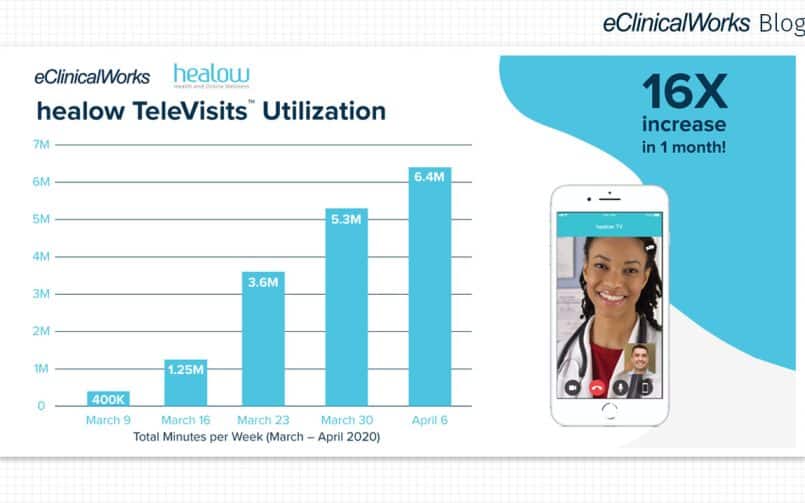
- 29 April 2020
- Blog
The Evolution and Importance of Telehealth

- 27 April 2020
- Blog
Deriving Greater Value from Telehealth

- 24 April 2020
- Blog
3 Practices Finding Success With Telehealth
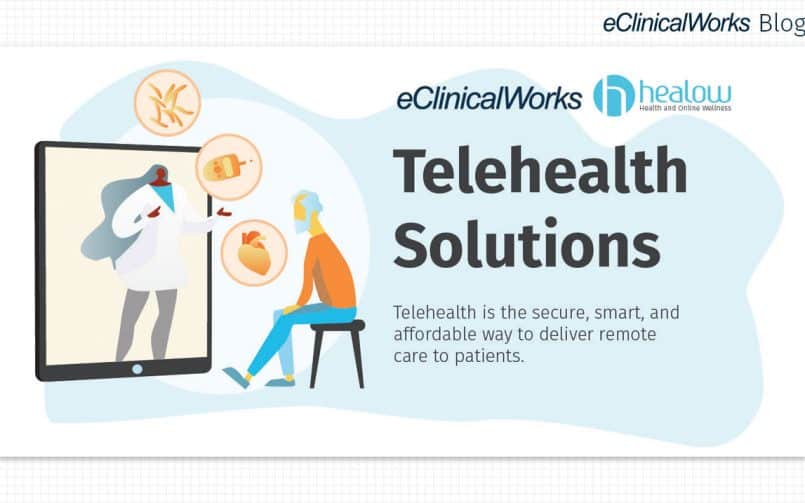
- 20 April 2020
- Blog
Why You Should Activate Telehealth Today

- 17 April 2020
- Blog
3 Practices Using Telehealth to Improve Patient Care

- 15 April 2020
- Blog
Shift in the Medical Mindset

- 13 April 2020
- Blog
How Telehealth Kept a Patient Out of the ER

- 10 April 2020
- Blog
Speeding Toward a New Healthcare Paradigm

- 9 April 2020
- Blog
How Dallas Renal Group is Providing Care While Social Distancing

- 8 April 2020
- Blog
Swift Action Results in Change of Telehealth Regulations

- 7 April 2020
- Blog
How Central Ohio Primary Care Physicians is Reducing ER Visits

- 6 April 2020
- Blog
Securing Access to Care During a Pandemic

- 3 April 2020
- Blog
How Telehealth is Keeping Patients Safe at Trusted Doctors

- 2 April 2020
- Blog
Flattening the Curve With Telehealth

- 1 April 2020
- Blog
How First Choice Neurology Transformed Their Practice With Telehealth

- 31 March 2020
- Blog
Telehealth and Mental Health in a Time of Crisis

- 27 March 2020
- Blog
How SG Pediatrics are Using TeleVisits to Help Patients

- 26 March 2020
- Blog
The eClinicalWorks Telehealth Advantage

- 25 March 2020
- Blog
How Televisits Have Transformed Comprehensive Sleep Center

- 24 March 2020
- Blog
Telehealth: Helping Throughout History

- 23 March 2020
- Blog
How healow TeleVisits Can Help During a Health Crisis

- 20 March 2020
- Blog
healow TeleVisits: How Fast Deployment Helps

- 11 March 2020
- Blog
Expanding Access to Care With healow TeleVisits

- 17 January 2020
- Blog
Teledentistry: Expanding Access to Dental Care
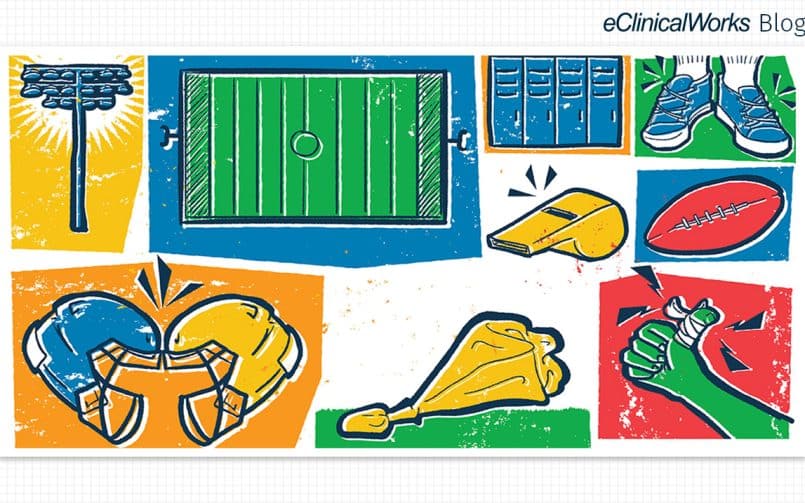
- 8 January 2020
- Blog
The State of Telehealth in 2020
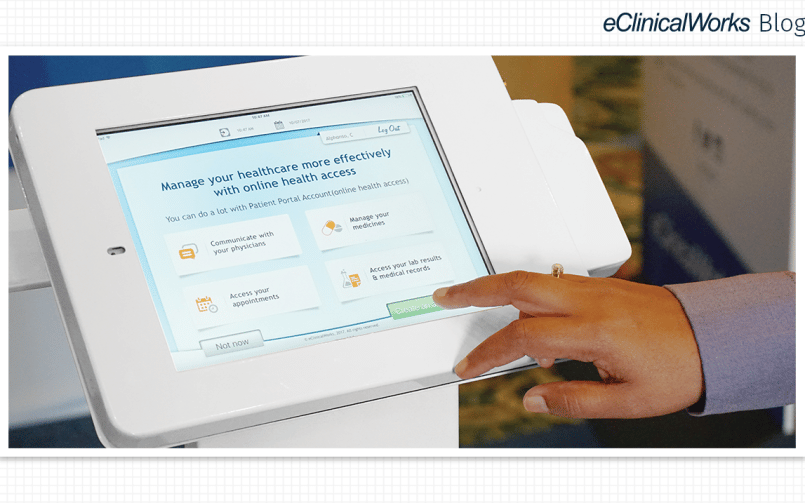
- 14 August 2019
- Blog
Patient-Centered Care: How the Approach Can Improve Healthcare
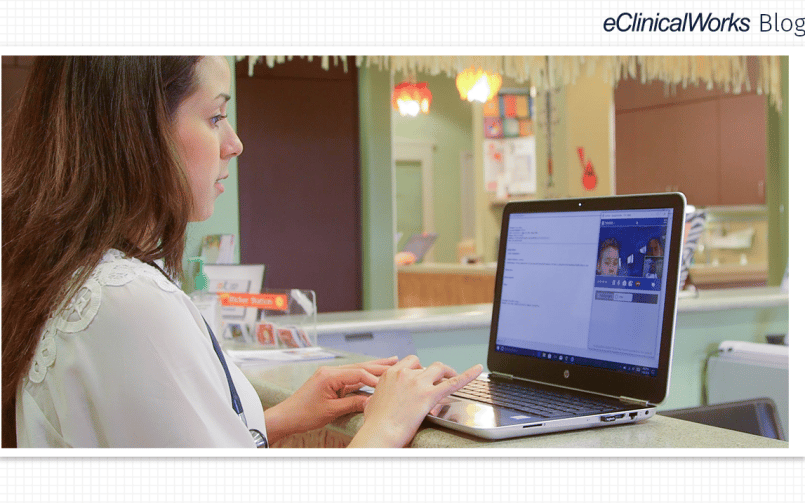
- 5 June 2019
- Blog
3 Ways That Telehealth Is Improving Healthcare
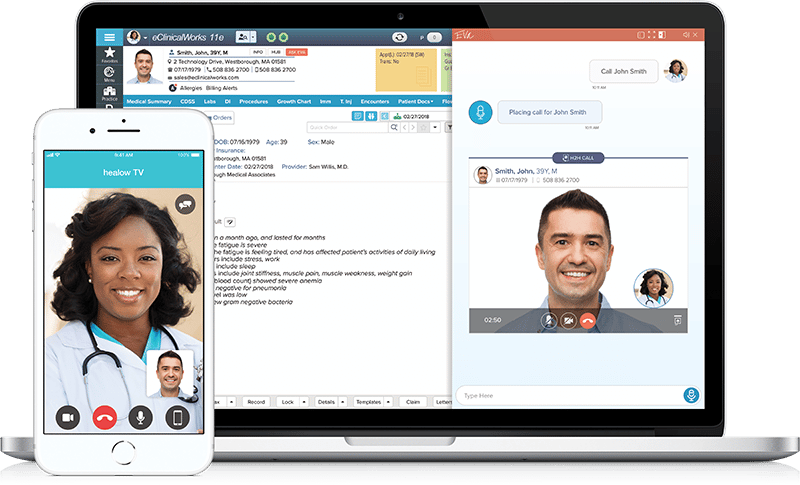
- 9 January 2019
- Blog
Telehealth – Rural Health Center

- 1 November 2018
- Blog
Three Ways Telemedicine Improves Care for Providers and Patients

- 15 October 2018
- Blog
How telehealth helps to improve compliance among ADHD patients
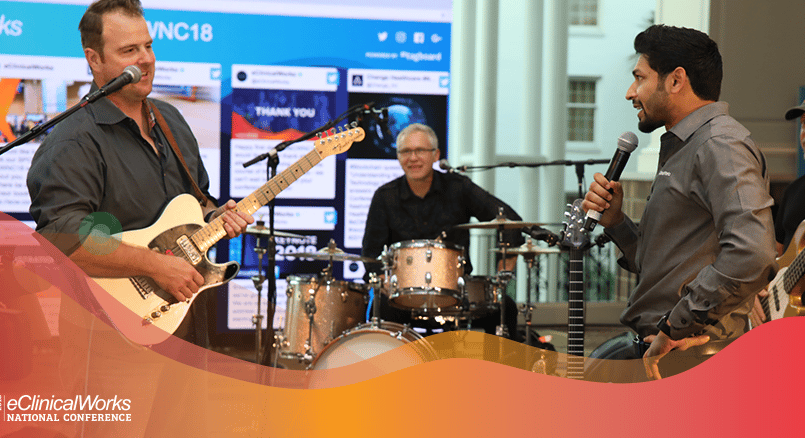
- 7 October 2018
- Blog
Powering Through on Game Day!

- 6 October 2018
- Blog
Making Connections on Saturday
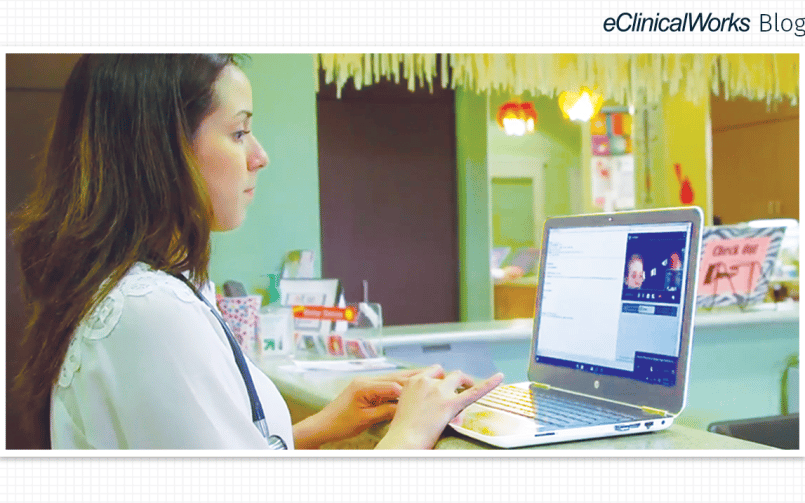
- 30 May 2018
- Blog
ADHD and Telemedicine: A Natural Fit
- 20 March 2015
- Blog
The Next Phase of Innovation in Healthcare
- 20 March 2015
- Blog





